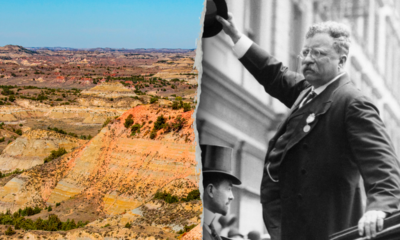Business
Irvine-based EV maker Rivian gets $5-billion lifeline from Volkswagen

Irvine-based Rivian Automotive got a big financial boost on Tuesday, as Volkswagen agreed to invest up to $5 billion in a joint venture with the struggling manufacturer of electric trucks.
Under a partnership announced by the companies, the German automaker will provide $1 billion initially and as much as $4 billion more over time.
The infusion will give VW the ability to tap the company’s technology to develop “next generation” battery-powered vehicles and software.
The surprise investment comes during a tough time for the electric vehicle market, which has posed economic headwinds for Rivian and other EV makers.
With their sleek design, Rivian trucks and sport utility vehicles initially drew plenty of interest among investors, fueling a massively successful initial public offering of stock in 2021; the company ended its first day of trading valued at nearly $88 billion. Amazon.com is Rivian’s largest shareholder.
But analysts said some car buyers were put off by the high price of Rivian’s latest offering of vehicles — the company’s R1T electric pickup truck starts at nearly $70,000, while its R1S SUV starts at almost $75,000.
Rivian reported a net loss of $1.52 billion for the three-month period that ended Dec. 31, compared with $1.72 billion during the same period a year earlier.
Signs of stress mounted. In March, Rivian postponed plans to build a new $5-billion manufacturing plant in Georgia to save money amid heavy losses.
A month earlier, Rivian announced a 10% cut to its workforce and lower production expectations.
Last week another local EV manufacturer — Fisker Group Inc. of Manhattan Beach — filed for Chapter 11 bankruptcy protection after it failed to secure financing from undisclosed automakers.
Early this year, Apple pulled the plug on its self-driving electric vehicle program, reportedly after spending $10 billion over a decade.
And Lucid Motors, a maker of luxury electric vehicles in the Bay Area city of Newark, received a $1-billion infusion last month from an affiliate of the Saudi sovereign wealth fund — the kind of big backer that Fisker didn’t have.
Rivian’s shares, which were pummeled earlier this year, jumped 30% in extended trading on Tuesday. The shares closed at $11.96.
Tesla Inc., the biggest player in the business, also has been squeezed by weak sales and declining profits. The company said in April that it would lay off more than 10% of its workforce.
Bloomberg News contributed to this report.

Business
Christmas music driving you nuts? Why holiday playlists are everywhere

If it began to sound a lot like Christmas earlier than usual this year, it wasn’t your imagination.
Halloween wasn’t even over before Spotify users began curating songs about mistletoe, snow and presents under the tree.
Holiday playlists created on Spotify in the U.S. jumped 60% in October over last year, the Swedish audio company said. Some Spotify users started crafting holiday playlists as early as summer.
“It’s a combination of wanting to feel good and nostalgia, and these are testing times,” said Talia Kraines, editorial lead for pop at Spotify. “Somehow Christmas music brings comfort and I think that’s a real part of it.”
Indeed, eight of the top 10 songs on Billboard’s Hot 100 chart for the week that ended Saturday were Christmas songs, with the top five being familiar holiday classics, including Mariah Carey’s 1994 hit “All I Want for Christmas Is You,” Brenda Lee’s 1958 recording of “Rockin’ Around the Christmas Tree” and Wham!’s “Last Christmas,” released in 1984.
On-demand streams for holiday music in the U.S. increased 27% to 8.3 billion this year, compared with a year ago, according to L.A.-based data firm Luminate.
The popularity of music streaming has helped to fuel a surge in users seeking out more holiday music, and earlier in the year.
The change has been driven by technology. In the pre-streaming era, consumers would play Christmas music through CDs and records or catch tunes on the radio during the winter months.
But the rise of Spotify, Apple Music and other streaming services opened the floodgates by offering large libraries of songs on demand.
The new platforms created and marketed holiday playlists, making it easier for consumers to discover seasonal songs and add new ones to their own song collections.
“You used to have a bunch of Christmas albums around and rotate them through as you’re decorating the house or wrapping the presents,” said Dave Bakula, vice president of analytics and data insights at Iconic Artists Group. “The availability of all the music, all the time is such an incredible gift that streaming services have given us.”
For musicians and record labels, holiday music also has taken on growing importance.
Vince Szydlowski, executive vice president of commerce at Universal Music Enterprises, the centralized global catalog division of Universal Music Group, said he starts planning the year’s campaign for holiday music in January.
“For UMG and many of the artists that you associate with holiday music, it will be the most important time of the year, without a doubt,” Szydlowski said. “In some cases, especially with certain legendary artists, it could make or break their year.”
Artist Brenda Lee performs at the “Rockin’ Around the Christmas Tree” concert at the Country Music Hall of Fame and Museum in Nashville in 2015.
(Laura Roberts / Invision / AP)
One campaign Universal Music Enterprises worked on was promoting Elton John’s 1973 holiday song “Step Into Christmas.” The song was featured in Amazon Prime Video’s holiday movie “Oh. What. Fun,” starring Michelle Pfeiffer.
John posted viral social media videos with the song playing in the background that drew more than 100 million views.
Those efforts helped boost the track’s consumption by 44% this year compared with last year, according to Universal Music Group, citing data from Luminate.
“It’s a very comprehensive campaign in which to continue to boost that track visibility among the holiday perennials,” Szydlowski said.
Many of the popular Christmas songs in the U.S. date back decades, making it challenging for new, original holiday songs to break through.
Mariah Carey’s “All I Want for Christmas Is You” has been the longest-running No. 1 song in Billboard Hot 100 history at 21 weeks, according to Billboard.
The holidays are an important time for older artists like Brenda Lee, whose rendition of “Rockin’ Around the Christmas Tree” remains a winter hit.
In November 2023, Lee’s version of the song topped Billboard’s Hot 100 chart for the first time, 65 years after the song’s debut, making Lee, then 79, the oldest woman to top the Hot 100, according to UMG.
Then there are artists like the late Nat King Cole, known for hits like the holiday classic “The Christmas Song,” and Dean Martin, who died in 1995 and whose rendition of “Let It Snow! Let It Snow! Let It Snow!” is especially popular during winter months.

Nat King Cole in 1963. “The Christmas Song” became one of his enduring hits.
(Capitol Records Archives)
Another source of appeal for Christmas music is that it‘s timeless.
It isn’t really affected by trends and the songs highlight themes like love, hope, joy and family that remind us of our friends, family and past Christmases, said Jimmy Edwards, president of Iconic Artists Group.
“It’s the one music that you can share it together from any age. As Nat would say, from 1 to 92, right?” Edwards said, referencing a lyric from Cole’s “The Christmas Song.” “Those emotional bonds you have with that music stay with you forever … It promotes the best of us and all the good things. That’s why people love it so much.”
.
Business
Google is at last letting users swap out embarrassing Gmail addresses without losing their data

Google has finally answered users’ cries, allowing Gmail users to swap out embarrassing teenage email addresses.
Gmail account holders can now change their existing @gmail.com address while retaining their data and services.
Once changed, old email addresses will remain active, and users will continue to receive emails sent to both the old and new addresses.
Saved data connected to earlier addresses, including photos, messages and emails, will not be affected.
The ability to change Google Account email addresses is gradually rolling out to all users, and is not immediately available to everyone, Google noted on its support page.
Gmail users who want to switch to more anonymous email addresses or felt burdened by the email addresses they chose as kids celebrated the update on social media.
“Feature needed: 2005. Feature arriving: 2025. Gap: two decades of suffering,” one user posted on X.
“So all those years of ‘cool’ usernames and cringe emails can be erased… shame it can’t delete the memories associated with them,” another X user posted.
“Nah I’m keeping StonerBeast42069 forever!!” one Reddit user quipped.
Members of the transgender community and others who have changed their names were also happy as the new options let them distance themselves from their former names.
Competing services such as Microsoft Outlook have long allowed users to easily change their primary address by adding an “alias.”
Google only allows accounts that end in @gmail.com to make changes, and the new address must also end in @gmail.com.
While users can reuse their old Google Account email address anytime, once changed, they cannot register another email address for the same account for the next 12 months.
Users interested in changing their emails under the new system need to confirm that it has been rolled out for their account.
In their Gmail account, users can click “Manage Your Google Account.” Under “Personal Info,” they can click on their Gmail account email address. If the option is available in their region, they can proceed by clicking on the “Change your Google Account email address” option.
Business
Downtown L.A.’s struggle is overstated and fixable, says the mogul who built the Grand

Downtown L.A. is doing better than you think it is, but the government needs to do more to energize the city, said one of the region’s longest and most successful real estate leaders.
Bill Witte is retiring after running Related California, a large-scale developer of both luxury and low-income apartments, for more than three decades.
The Grand LA, designed by Frank Gehry and developed by Rick Vogel, executive vice president at Related, is located across from the Walt Disney Concert Hall.
(Jay L. Clendenin / Los Angeles Times)
Among the high-profile projects he oversaw was the creation of the Grand LA, a $1-billion mega-project with housing, a hotel and restaurants designed by Frank Gehry across the street from the architect’s famous Walt Disney Concert Hall in downtown Los Angeles.
Witte founded Related California in 1989 with Stephen M. Ross, chairman of New York-based Related Cos. Related California is now one of the largest real estate companies on the West Coast with a portfolio of more than 21,000 residential units, including the Century condominium skyscraper in Century City, where television heiress Candy Spelling lives on the top two floors.
Related’s most recent project is 700 Broadway in Santa Monica, an upscale apartment complex with a private park, a grocery store and an Equinox Fitness Club. Related is also building a housing project for low-income families and seniors called Alveare in downtown Los Angeles’s South Park neighborhood.
Witte’s interest in development dates to his childhood in New York. His father was a builder, and young Witte enjoyed tramping around construction sites.
“I developed a fascination with cities,” he said.

Bill Witte at 700 Broadway in Santa Monica.
(Jason Armond / Los Angeles Times)
He went on to earn degrees in urban studies and urban planning from the University of Pennsylvania and broke into the field as a member of the Philadelphia planning staff in the freewheeling administration of Mayor Frank Rizzo in the mid-1970s, when the city had 25,000 abandoned housing units.
“It was very parochial in Philadelphia, part Rust Belt and part ‘Sopranos,’ ” Witte said. “I loved it.”
Witte later served as San Francisco’s deputy mayor for housing before joining Related Cos. More than 35 years later, he is stepping down as chairman Jan. 1. Succeeding him will be Gino Canori as chief executive of Related California’s market-rate division, and Ann Silverberg as chief executive of its affordable division. Witte will become chairman emeritus.
The Times met with Witte to discuss the challenges facing the region and the real estate industry in the years ahead. His answers have been edited for clarity and brevity.
Downtown’s reputation has suffered since the pandemic as many people express concern about homelessness and safety. How could it get back on track?
First of all, I’d say, it’s not as bad as you think it is. It’s better than you think it is. It’s still the cultural core of the region.
I don’t have a single magic bullet for addressing the homeless problem. It’s not just about bricks and mortar and shelter. It’s got all sorts of issues attached to it. I’m not completely happy with everything that’s gone on in L.A., but frankly, I think Mayor Bass and her team have done a pretty good job since they’ve been in office, trying to address the homeless problem. They’re making some progress.

700 Broadway, Bill Witte’s latest luxury apartment complex project.
(Jason Armond / Los Angeles Times)
I’m told that the sidewalks are cleaned like once a month. It has to be more frequent.
You really have to go out of your way to show that you’re trying to make a difference. I’m told there are food carts and things near the entrances of buildings. You add all these things together, and if you’re going to work downtown, it’s not the most welcoming environment.
They always say don’t sweat the small stuff, but I think it’s the small stuff that ultimately makes a difference here.
Prominent firms have decided they’d rather have their offices somewhere else, such as Century City or Pasadena. What can be done about that?
I think the city, the mayor’s office, needs to become very engaged in talking to tenants who are still here. What are the problems downtown? What can we do about them? We’ve seen a very big change in San Francisco in that regard, actively promoting the city and taking steps. I think there needs to be active discussions with people, including some who have left downtown.
Make sure that people’s security needs are being addressed, have some visible success stories and actively promote it. Downtown is just one neighborhood in the whole city, but it’s probably the one that was most affected by the pandemic.
What do you say about complaints about the lack of public-sector employees downtown, which makes the sidewalks, stores and restaurants less busy?
What do you think the private sector thinks when the government, with taxpayer dollars, can’t seem to get people to come back to the office? That is not helpful. There are examples where the private sector looks and says, ‘Wait a minute, maybe we shouldn’t be here either.’
The real estate community has been critical of 2022’s Measure ULA, saying it cuts into profits and makes developments financially unfeasible. How is it affecting your company?
We’re on both sides of that. Our Alveare project that just started in construction has 105 affordable units for low- and extremely low-income families, got $10 million from the city’s ULA funds.
1. Bill Witte, real estate developer, tours 700 Broadway-his firm’s newest luxury apartment complex project on Tuesday, Dec. 16, 2025 in Santa Monica, CA. (Jason Armond/Los Angeles Times) 2. Bill Witte, real estate developer, tours 700 Broadway-his firm’s newest luxury apartment complex project on Tuesday, Dec. 16, 2025 in Santa Monica, CA. (Jason Armond/Los Angeles Times) 3. Bill Witte, real estate developer, tours 700 Broadway—his firm’s newest luxury apartment complex project on Tuesday, Dec. 16, 2025 in Santa Monica, CA. (Jason Armond/Los Angeles Times) 4. Bill Witte, real estate developer, tours 700 Broadway-his firm’s newest luxury apartment complex project on Tuesday, Dec. 16, 2025 in Santa Monica, CA. (Jason Armond/Los Angeles Times)
In the market-rate commercial real estate world, it’s a problem. It is not helpful. It’s part of the package of things that the investment community has been concerned about in L.A. You can agree or disagree whether that should be true, but it is a fact. And I know Mayor Bass is trying to work on some modifications to make it perhaps less onerous. But again, it comes up because there is no obvious source of funds for affordable housing.
Sometimes there is pushback from neighbors when affordable housing is proposed. How would you address their concerns?
We’ve done almost 20,000 units across the state, including in L.A., and we’ve taken just neighbors on bus tours of some of our existing developments that are not just new but maybe 10 years old.
It’s not just us. The affordable housing world has grown significantly over the years, including qualitatively. Most projects have on-site services and the design is getting better. We’ve won more design awards for affordable housing in California than any other developer.
It doesn’t always require spending gobs more money. It’s being thoughtful, thinking about the long term, thinking about the public spaces, which is what brands these projects. And since we’ve often done affordable development next to or as part of market-rate housing, it forces us to think that way.
I think the financial side is the bigger challenge right now. You will hear pushback that these things are ridiculously expensive — $800,000 a unit to build. Why is that? Well, first of all, everything is more expensive. But there is a longtime tendency, not just in L.A., to apply a whole series of admittedly desirable public policy objectives onto affordable housing because the government is involved.
Some of it is labor standards, higher disability requirements — all of that adds to the cost. You can argue on their behalf, but I think local and state governments are beginning to understand that it’s going to be very difficult to keep selling initiatives here, not because of NIMBYism, but because it’s hard to justify the cost.
There is a perception among developers that it is tough to build a financially successful project in L.A beyond such money-related challenges as construction costs, labor shortages and high interest rates faced by developers in other California cities. Why is that?
You’ve got a relatively young City Council that has been pushing some very progressive goals, not just on housing, but also on minimum wage and other issues.
The challenge for L.A. right now in the growth area is sending some signals to the entities that provide debt and equity to these projects that you are very concerned with protecting existing tenants who are income- and rent-stressed, but you’re not opposed to some growth. Without growth, there’s not going to be any growth in revenues and the city’s budget is going to continue to be stressed.
There are other parts of the state where the investment community looks more favorably for that reason.
-

 Connecticut2 days ago
Connecticut2 days agoSnow Accumulation Estimates Increase For CT: Here Are The County-By-County Projections
-

 Entertainment2 days ago
Entertainment2 days agoHow the Grinch went from a Yuletide bit player to a Christmas A-lister
-

 Entertainment3 days ago
Entertainment3 days agoPat Finn, comedy actor known for roles in ‘The Middle’ and ‘Seinfeld,’ dies at 60
-

 Milwaukee, WI4 days ago
Milwaukee, WI4 days ago16 music and theater performances to see in Milwaukee in January 2026
-

 World1 week ago
World1 week agoPutin says Russia won’t launch new attacks on other countries ‘if you treat us with respect’
-

 Science1 week ago
Science1 week agoChina’s Clean Energy Push is Powering Flying Taxis, Food Delivery Drones and Bullet Trains
-

 Alabama1 week ago
Alabama1 week ago4 Takeaways From Alabama’s Comeback, Oklahoma’s Collapse in CFP First-Round Game
-

 Education1 week ago
Education1 week agoHow Trump’s Policies on Tariffs, Health Care, Immigration and More Impact You






















